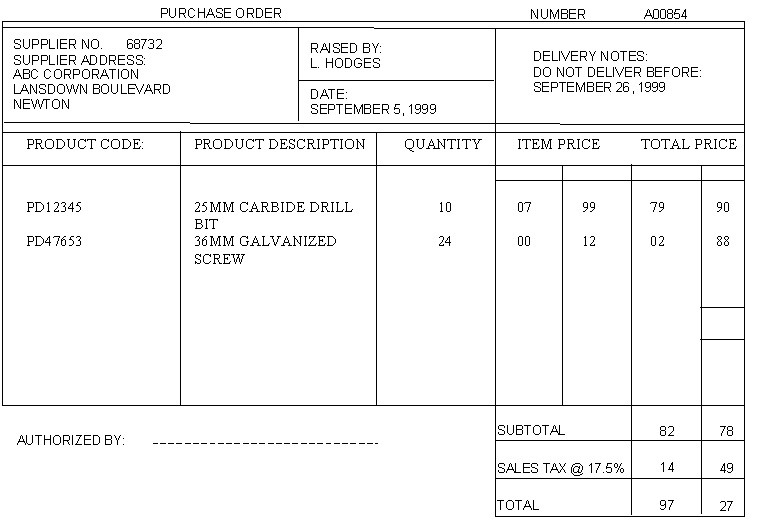

A person or program normally requires only a subset of the data in a system. Those data views of interest to users are of particular significance to analysts as evidence of what the system is currently intended to handle. By identifying these views, you can begin to understand which types of data are likely to be relevant to particular procedures.
A user view is a special case of data view. It is a collection of associated fields of interest to a user during procedure execution.
During user view analysis, you collect a full representation of data used in current systems and the associations between the data. When studying user views, it is important to examine a selection of examples that have been completed.
User views appear within layouts such as screens, manual files, manual and computerized forms, and reports.
A layout can contain more than one data view. For example, a form may contain data about several things. The example in the following illustration contains data about purchase order, delivery, product and supplier, among others.

Different procedures may be concerned with different parts of each user view. User view analysis provides a secondary source of information for modeling current system data, and as such, it acts as a confirmation for data and their associations gained from the analysis of current information system data stores.
In the illustration, Supplier is indeed shown to be relevant to the Purchasing data store. You can also identify its relationship with the other entity types previously found.
|
Copyright © 2014 CA.
All rights reserved.
|
|